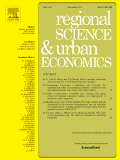Professor Ross’s paper “What Drives Racial and Ethnic Differences in High-Cost Mortgages? The Role of High-Risk Lenders” was just published in the Review of Financial Studies, a Top 3 Finance Journal.
This paper documents the existence of large differences in the cost of credit for minority borrowers, and the fact that most of the racial differences arise across lenders, rather than being driven by lenders who treat equally qualified minority borrowers differently than white borrowers. The paper shows that these effects are primarily driven by lenders whose loans tended to have very high default rates during the crisis.

![ross[1]](https://econ.media.uconn.edu/wp-content/uploads/sites/681/2012/03/ross1-150x150.jpg)
